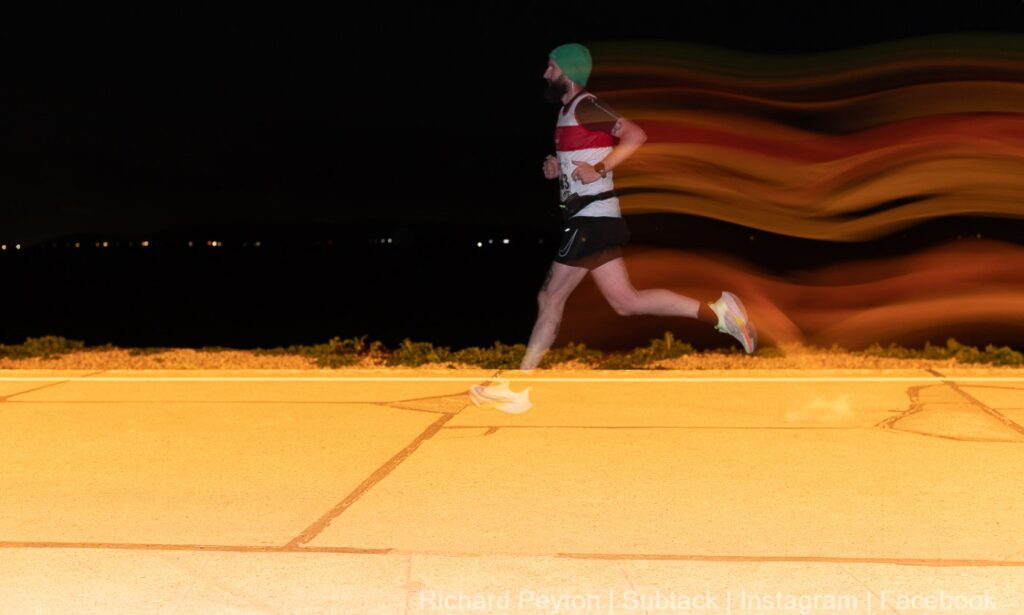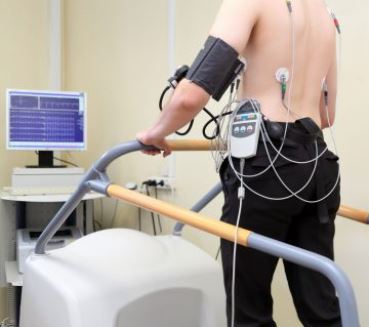Different running paces
Runners have different paces to choose from. Beginners tend to run too fast at the beginning of a run and then need to slow down drastically due to the oxygen deficit after a several minutes and may even end up walking. It is very important to warm-up slowly before picking up the pace, in a steady run for example, and it is as equally important to slow down to cool-down the body afterwards. It is important to understand the different running paces and the physiological benefit of each. The Interval pace is a very important pace, as it improves the usage of Oxygen. Each week, only five percent of the weekly mileage should be run at Interval pace.
There are five different paces and each should be included in the different phases of a training plan:
1 – Endurance pace / Easy pace
2 – Marathon pace
3 – Threshold pace
4 – Interval pace
5 – Repetition pace
In addition, sprinters should work at a much faster than repetition pace, but their workouts are very specific and linked to the various different sprinting distances (100m, 200m and 400m).
Training your speed with repetitions at your 1,500m pace
If you’re a runner looking to improve your fitness level, one key aspect to focus on is your speed. Some runners are born with great speed, but it is a factor that need to be trained, especially for slow runners and marathon runners who spend month at slower speeds.
Improving your speed will help to run faster and with a better form too.
One effective way to increase your speed is through repetition training, which involves alternating periods of high-intensity short exercise with periods of of rest or lower-intensity exercise. In this article, we will discuss how to train your speed with repetitions at your 1,500m pace.
How does repetition training help increase speed?
Training at repetition pace, particularly at 1,500m pace, offers several benefits for middle-distance runners.
This type of training is designed to improve your anaerobic capacity, which is crucial for the high-intensity effort required in 1,500m races. By running at your goal race pace, you’re conditioning your body to handle the specific demands of the event. It helps in recruiting and developing fast-twitch muscle fibers, which are essential for quick, explosive movements and can increase your top-end speed.
Moreover, repetition training can enhance your running economy, making you more efficient at maintaining high speeds over the distance. It is often forgotten during marathon training.
It also prepares you mentally, allowing you to familiarize yourself with the pace and effort level that you’ll experience during a race. This can be particularly beneficial for pacing strategy and race execution.
Additionally, the structured recovery periods in repetition workouts help you to recover optimally while still maintaining a high level of intensity in your training sessions.

This type of training is more anaerobic. It consists of short bursts of intense activity that do not rely on oxygen but rather on stored energy in the muscles. This form of training is about building strength, power, and muscle mass through activities like weightlifting, sprinting, and high-intensity interval training (HIIT). Anaerobic workouts are usually shorter in duration but higher in intensity compared to aerobic exercises.
It’s important to note that while aerobic exercise can be done by most people and is often recommended for those new to exercise, anaerobic exercise should be approached with caution, especially for beginners or those with certain health conditions. Consulting with a fitness professional or a healthcare provider before starting an anaerobic regimen is advisable to ensure safety and effectiveness.
The pace
The Repetition pace is run at approximately ninety five percent of your maximal heart rate. The general table below determines it, based on your age:
| Age | Maximal Heart rate (Max HR = 220 – age) | Repetition pace (95% to 105% max HR) |
| 20 years | 200 bpm | 190 – 210 bpm |
| 40 years | 180 bpm | 171 – 189 bpm |
| 60 years | 160 bpm | 152 – 168 bpm |
| 80 years | 140 bpm | 133 – 147 bpm |
The issue with Anaerobic effort, is that the repetition time is short and the heart rate has not the time to increase, then it may be difficult to reach these values during the session.
This general table does not fit everyone. Depending on your fitness and your training history, your maximal heart rate may vary. You can go to a sport doctor to undergo a Cardiac stress test on a stationary bike or a treadmill to define your own maximal heart rate.

Untrained people will have their threshold at 80% of their maximal heart rate and top athletes can run up to nearly 95% of their maximal heart rate at threshold pace.
Another way to estimate your Repetition pace is to define it with your current racing result. I suggest you race a 5km, and depending on your result, it defines your threshold pace:
| 5 km time | Repetition pace [/kilometers] | Repetition pace [/miles] |
| 15 minutes | 2’43”/km | 4’22”/mile |
| 20 minutes | 3’37”/km | 5’49”/mile |
| 25 minutes | 4’30”/km | 7’14”/mile |
| 30 minutes | 5’37”/km | 9’02”/mile |
These tables can be a good indication, but to get an accurate pace, it is important to get a blood lactate test in order to know both thresholds. Elite athletes are tested regularly throughout the season.
How to train your speed with Repetitions at your 1,500m pace
To train your speed with Repetitions at your 1,500m pace, follow these steps:
1 Warm-up: Start with a 10-15 minute warm-up of light jogging or dynamic stretching to get your body ready for exercise.
2 Choose a distance: Decide on a distance that you can cover in 1 to 2 minutes. For example, you can choose a distances between 200m for beginers to 500m for elites.
3 Set your pace: Set your pace for the intervals at your 1,500m race pace. This should be a pace that feels very challenging for the duration of the repetition.
4 Rest: After each interval, take a short rest period of 1-2 minutes to recover before starting the next interval.
5 Repeat: Repeat the intervals for a total of 4-6 repetitions, depending on your fitness level and training goals.
6 Cool-down: Finish with a 10-15 minute cool-down of light jogging or walking to help your body recover from the workout.
Example workout:
Warm-up : 10 minutes of light jogging
Dynamic Drills : 10 minutes
Strides : 4 or 5 strides (80m to 100m) to ensure the body is well warmed-up before the session
Repetitions : 4 x 200m at 1,500m pace, with 1-2 minutes rest between intervals + 4 x 400m at 1,500m pace, with 1-2 minutes rest between intervals
Cool-down : 10 minutes of light jogging

Tips for success:
Gradually increase the number of repetitions or distance of each interval as your fitness improves, but always keep the repetitions under 2 minutes to ensure you work anaerobically.
Keep track of your pace and progress over time to monitor your improvement.
Incorporate Repetition training into your training routine once a week, along with other types of training such as long runs and tempo runs.
Conclusion
In conclusion, Repetition training at your 1,500m pace is an effective way to improve your speed and running form. It can be a fun session to perform with your friends or club mates.
